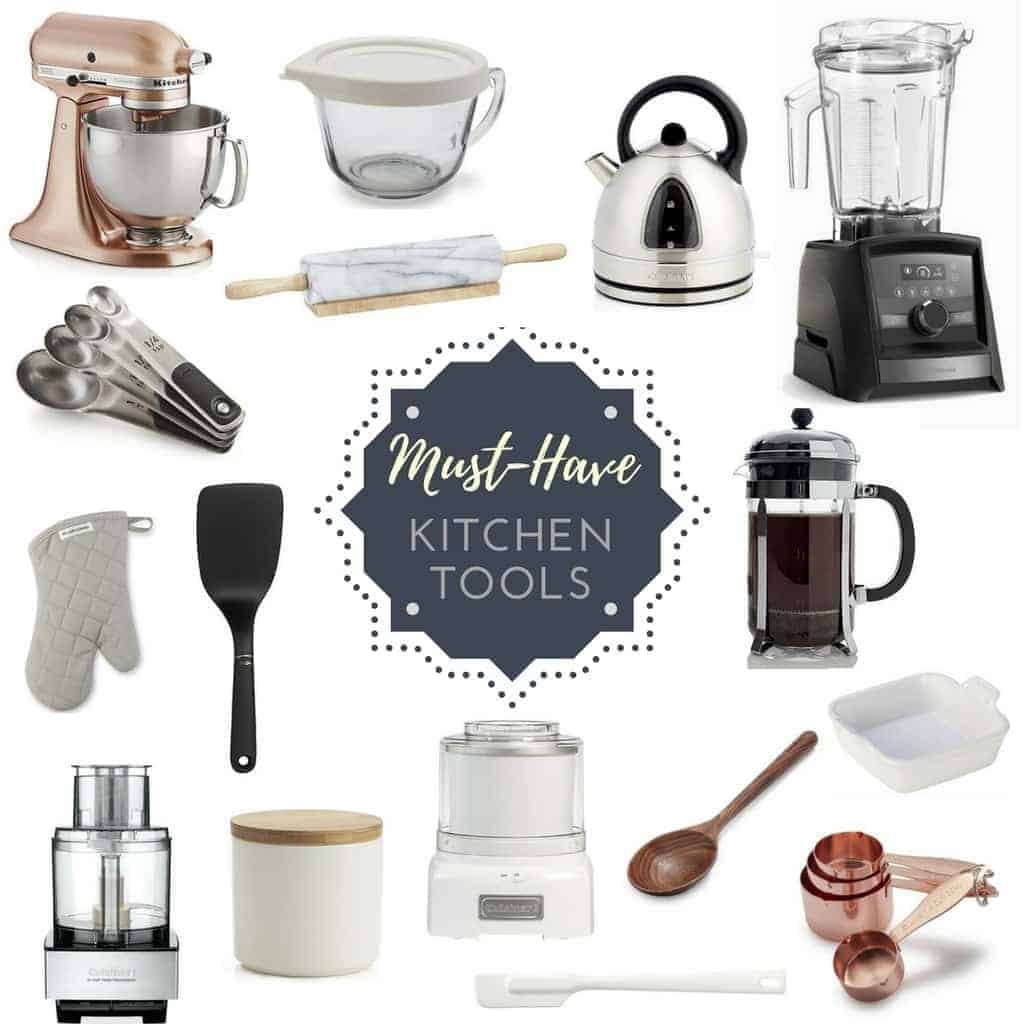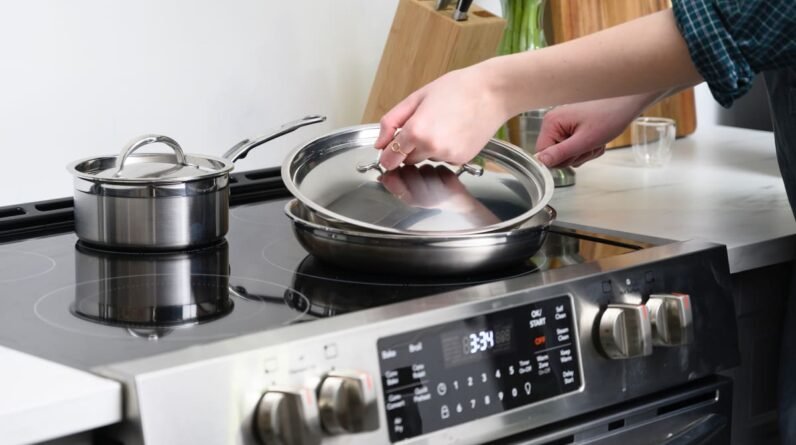
Are you thinking of upgrading your kitchen with an induction stove, but unsure about which cookware to choose? Look no further! This article will guide you through the process of selecting the perfect cookware for an induction stove, ensuring that your culinary adventures are a breeze and your meals are cooked to perfection. From understanding the basic principles of induction cooking to exploring the different types of cookware materials that are compatible, you’ll find all the information you need to make an informed decision and elevate your cooking experience. So, let’s get started and find the ideal cookware for your induction stove!
Choosing the Perfect Cookware for an Induction Stove
If you have recently invested in an induction stove, it is essential to choose the right type of cookware to make the most out of your cooking experience. Induction stoves work through a magnetic field that induces an electric current in the bottom of the cookware. As a result, not all types of cookware are compatible with induction stoves. To help you understand the various factors to consider when selecting cookware for your induction stove, we have put together this comprehensive guide.
Material
The first thing to consider when selecting cookware for an induction stove is the material. There are several materials commonly used in cookware, including stainless steel, cast iron, carbon steel, aluminum, copper, and non-stick. Each material has its pros and cons, but not all of them are suitable for induction cooking.
-
Stainless Steel: Stainless steel is a popular choice for its durability and resistance to rust and corrosion. It is also compatible with induction stoves and provides good heat distribution.
-
Cast Iron: Cast iron is known for its excellent heat retention and even heating. It is compatible with induction stoves but can be quite heavy.
-
Carbon Steel: Carbon steel is similar to cast iron but is lighter and more responsive to temperature changes. It is also compatible with induction stoves.
-
Aluminum: Aluminum pans are lightweight and offer excellent heat conduction. However, they are not compatible with induction stoves unless they have a magnetic base.
-
Copper: Copper pans provide exceptional heat conductivity and precise temperature control. Unfortunately, they are not compatible with induction stoves unless they have a magnetic base.
-
Non-Stick: Non-stick cookware is convenient for easy food release and cleaning. However, not all non-stick pans are compatible with induction stoves. Look for induction-compatible non-stick cookware if this is your preference.
Magnetic Properties
Induction stoves require cookware with magnetic properties to generate the necessary heat. There are two types of magnetic properties to consider: ferromagnetic and non-ferromagnetic materials.
-
Ferromagnetic Materials: These materials contain iron and are highly responsive to magnetic fields. Examples include stainless steel and cast iron, which are ideal for induction cooking.
-
Non-Ferromagnetic Materials: These materials do not contain iron and are not responsive to magnetic fields. Examples include aluminum and copper, which are not suitable for induction cooking unless they have a magnetic base.
When selecting cookware for your induction stove, ensure that the bottom of the pan is labeled as induction-compatible.
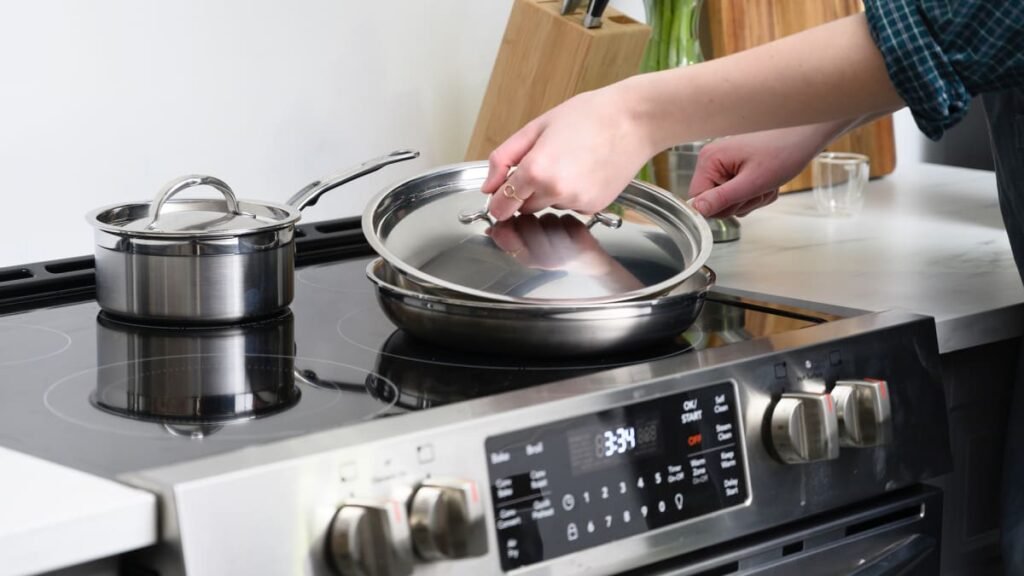
This image is property of reviewed-com-res.cloudinary.com.
Base Thickness
The base thickness of your cookware plays a crucial role in the cooking performance on an induction stove. A thicker base allows for better heat distribution and prevents hot spots. It also helps in achieving more even cooking results.
It is essential to pay attention to the base thickness when selecting cookware for your induction stove. A base thickness of at least 3-5 millimeters is recommended for optimal heat distribution and cooking performance.
Flat Bottom
Having a flat bottom is essential for effective heat transfer and cooking on an induction stove. A cookware with a flat bottom ensures consistent contact with the induction cooktop surface, maximizing the transfer of heat.
Induction cooktops rely on a magnetic field to generate heat in the cookware, and having a flat bottom ensures efficient energy transfer. Avoid cookware with a curved or warped bottom, as it may result in poor heat transfer and uneven cooking.
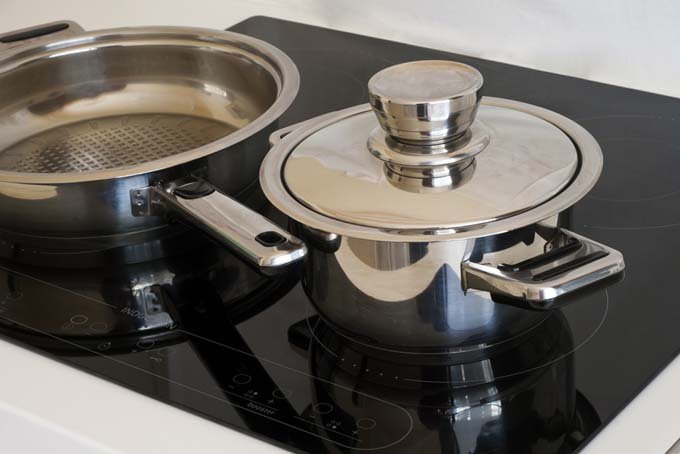
This image is property of foodal.com.
Induction Compatibility
To ensure that your cookware is compatible with an induction stove, it is essential to verify its compatibility before making a purchase. There are several methods to test whether a cookware is induction-compatible:
-
The easiest method is to check if the cookware has an induction symbol labeled on the bottom. This symbol indicates that the cookware is designed for induction cooking.
-
Another way is to use a magnet. If a magnet strongly sticks to the bottom of the cookware, it indicates a high chance of compatibility with induction stoves.
If you are unsure about a specific cookware’s compatibility, there are many online resources available that provide comprehensive lists of induction-compatible cookware brands and models. These resources can help you make an informed decision when selecting cookware for your induction stove.
Heat Distribution
One of the advantages of induction cooking is its ability to provide even heat distribution. However, the cookware you use can affect this feature. The material and design of the cookware play a significant role in heat distribution.
-
Even Heating: Stainless steel, cast iron, and carbon steel are materials known for their excellent heat distribution, ensuring even cooking results.
-
Hot Spots: Some cookware materials, such as aluminum and copper, are more prone to hot spots due to their high conductivity. However, cookware with a layered or encapsulated base can help mitigate this issue.
-
Conductivity: Copper cookware is highly conductive and provides precise temperature control. Stainless steel cookware with an aluminum or copper core also offers good heat conductivity.
Consider these factors when selecting your cookware to ensure consistent heat distribution and avoid uneven cooking.
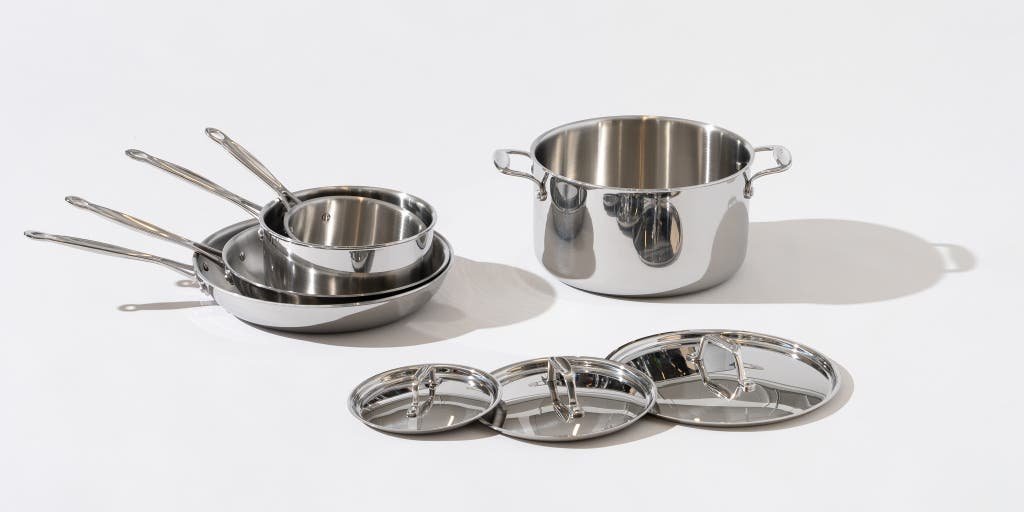
This image is property of cdn.thewirecutter.com.
Size and Shape
The size and shape of your cookware can impact its performance on an induction stove. Here are some considerations:
-
Pan Size: Choose cookware that is compatible with the size of your induction cooking zone. Using a pan that is too small or too large may result in inefficient heat transfer.
-
Handle Length and Design: Opt for cookware with handles that stay cool during cooking for safety reasons. The handle design should also provide a comfortable grip.
-
Lid Compatibility: Check if the cookware comes with a compatible lid. A well-fitting lid helps retain heat and moisture, enhancing the cooking process.
Considering these factors will ensure that your cookware is suitable for your induction stove and provides a pleasant cooking experience.
Cookware Maintenance
Proper cookware maintenance is essential to prolong its lifespan and maintain optimal performance. Here are some tips for taking care of your induction-compatible cookware:
-
Cleaning: Follow the manufacturer’s instructions for cleaning your cookware. Most induction-compatible cookware can be safely cleaned in the dishwasher, but handwashing is recommended for better maintenance.
-
Cooking Techniques: Avoid using excessive heat or overheating your cookware, as this can damage the non-stick coating or affect the performance of other materials.
-
Utensil Compatibility: Opt for silicone, wooden, or nylon utensils to prevent scratching or damaging the non-stick coating or the surface of your cookware. Metal utensils should be avoided.
By following these maintenance practices, you can ensure the longevity and performance of your induction cookware.
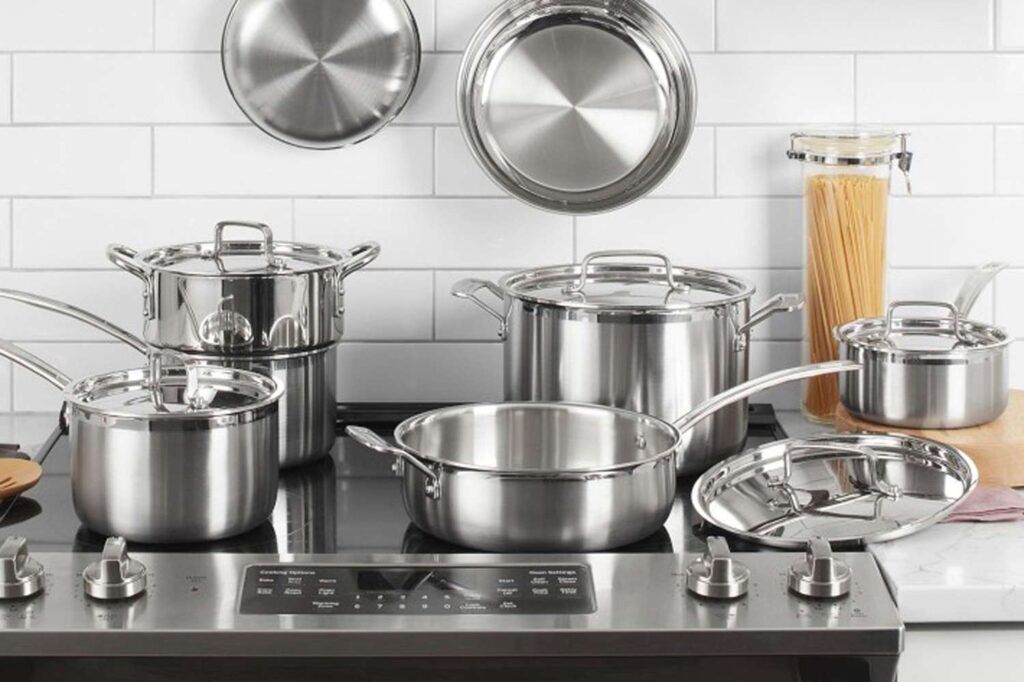
This image is property of www.foodandwine.com.
Price Range
Cookware is available in various price ranges to suit different budgets and preferences. Here are some options to consider:
-
Budget Options: There are affordable options available for those on a tight budget. Look for stainless steel or aluminum cookware with an induction-compatible base.
-
Mid-Range Choices: Mid-range cookware offers better quality and performance. Look for stainless steel or non-stick cookware with additional features like encapsulated bases for better heat distribution.
-
Premium Selections: Premium cookware brands offer exceptional quality, durability, and performance. Consider investing in high-quality stainless steel or copper cookware for superior heat conductivity and control.
Consider your budget and cooking needs when selecting the right price range for your induction cookware.
Cooking Preferences
Ultimately, your cooking preferences will play a significant role in the type of cookware you choose for your induction stove. Consider the following factors:
-
Cooking Style: If you frequently cook delicate foods like fish or eggs, non-stick cookware may be a preferred option. If you prefer browning and searing, stainless steel or cast iron pans may be your best choice.
-
Specialty Cookware: If you have specific cooking requirements or enjoy specialized cooking techniques, consider investing in specialty cookware designed for those purposes. Examples include woks, griddles, or saucepans with steamer inserts.
By considering your cooking preferences, you can tailor your induction cookware selection to your specific needs.
In conclusion, selecting the right cookware for your induction stove is crucial to achieve optimal cooking results. Consider the material, magnetic properties, base thickness, flat bottom, induction compatibility, heat distribution, size and shape, maintenance, price range, and your cooking preferences when making your selection. By following these guidelines, you can ensure that your induction cookware enhances your cooking experience and meets your culinary needs. Happy cooking on your induction stove!

This image is property of reviewed-com-res.cloudinary.com.

